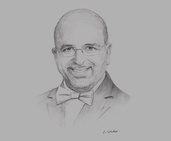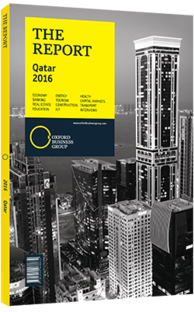Raghavan Seetharaman, Group CEO, Doha Bank: Interview

Interview: Raghavan Seetharaman
How concerned are you that bank lending in the country could be impacted in 2016 given the current state of the economy?
RAGHAVAN SEETHARAMAN: Lending is an overall function of economic momentum in the country. If the state is going to score 4.3% growth, then I would expect overall lending in the industry to expand by 7-8%. With regards to non-hydrocarbons growth, which is double-digit, the majority of expansion will be in this area. The government has budgeted for this, whether it be in health care, education, roads, rail, seaports or airports. There are extensive infrastructure projects taking place which need to be backed by bank lending, and specifically project financing, for their construction. The service sector is also showing signs of improvement, and trade should register 6-7% incremental growth. These are all factors that will continue to drive lending in 2016. At present, we expect our growth to be between 4-5% that year, in line with the aforementioned developments.
To what extent are oil price declines altering the project financing environment, and what changes can be expected in Qatar in this regard?
SEETHARAMAN: Project financing varies according to the type of project. If short-term or medium-term financing is needed, then local banks get involved. If it is long-term financing, then specialised global financial institutions come into play. There can be some joint dispersion from local banks but that is not their prerogative. We do not want our assets to be beyond the medium term. Even if we provide long-term financing, then it will be marginal. As a result we have to find a balance, and there is a maturity mismatch when it comes to assets and liabilities management. With oil prices going down, there will be tightening liquidity in both the local and regional spaces, which will have an impact on the ability of banks to provide financing for infrastructure projects in the future.
Has the challenging economic environment limited local banks’ appetite for foreign expansion?
SEETHARAMAN: International expansion is such that if the local market becomes global, then you have to go global. Today’s changing dynamics mean it is now imperative to ensure that such expansion is supported by organic growth as there is less risk. Doha Bank goes to markets where there is economic linkage. Local institutions that have engaged in the acquisitions model will now slow down. The last thing a bank needs at this point is to take shareholders’ money and dilute their earnings with acquisitions. Care is needed as the global market is visibly shaken and footprints now need to be scientifically measured and moderated.
In terms of our footprint, we are already present in places where Qatar and other Gulf states have economic linkage. You can see this with our presence in India. Looking at our shareholder’s contributions and the overall balance sheet, 2016 will be more of a year of consolidation and optimisation than one in which we create a greater footprint for the sake of it.
As the rate of lending increases and public sector borrowing continues to contract, what sort of performance can the industry expect in 2016?
SEETHARAMAN: The cost of funding has changed. The continuing regression of oil prices has created a current-account deficit locally. The region itself is experiencing a GDP contraction of over half a trillion dollars. That will have a direct impact on the credit ratio and also on the re-pricing of existing assets based on liquidity stress. If pricing is going up, it is rational to maintain a net interest margin. When the cost of funding goes up, you have to re-price your lending assets and earning assets. There is nothing abnormal about this, and all financial institutions will have to consider it because they have to maintain the interests of their customers as well as shareholders.
You have reached the limit of premium articles you can view for free.
Choose from the options below to purchase print or digital editions of our Reports. You can also purchase a website subscription giving you unlimited access to all of our Reports online for 12 months.
If you have already purchased this Report or have a website subscription, please login to continue.

